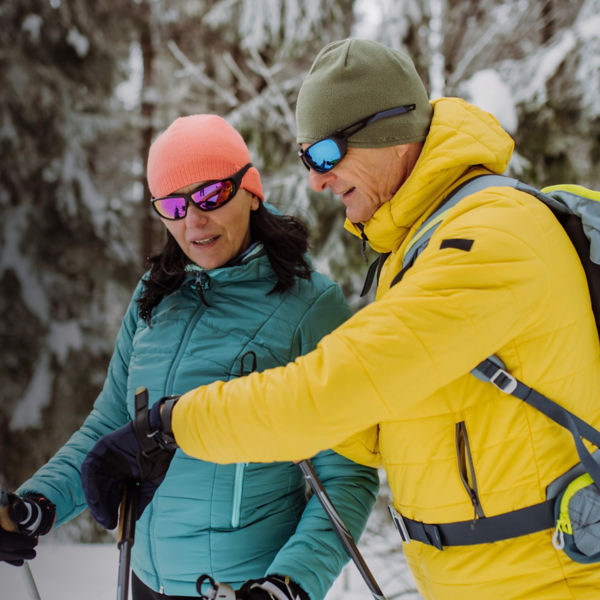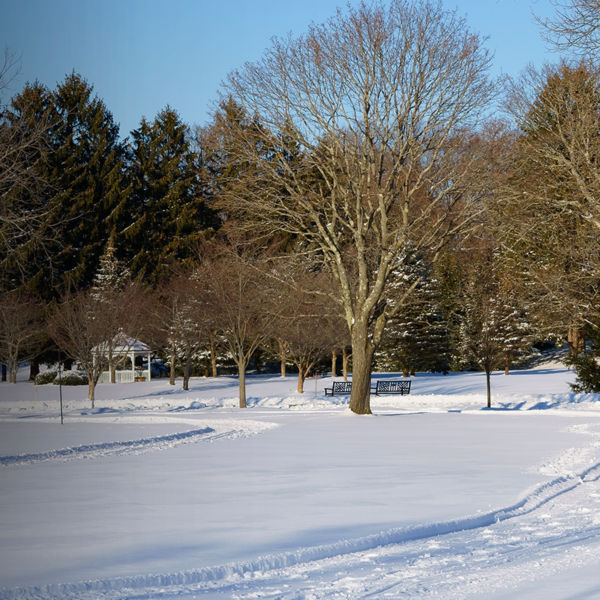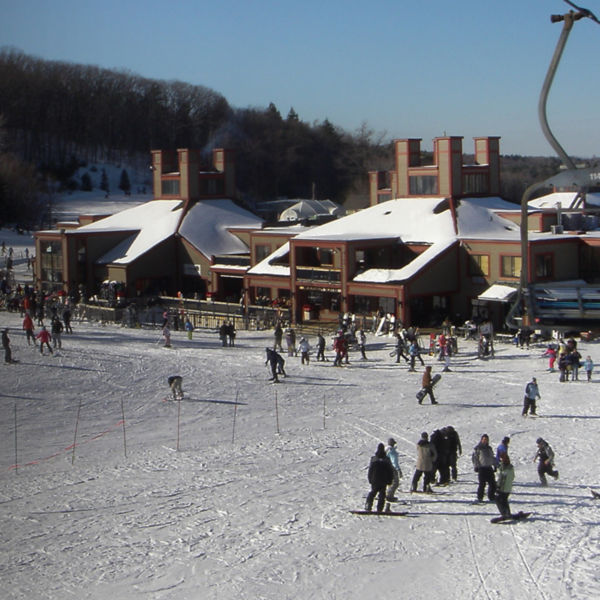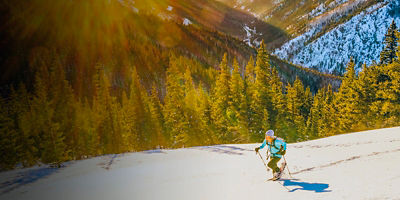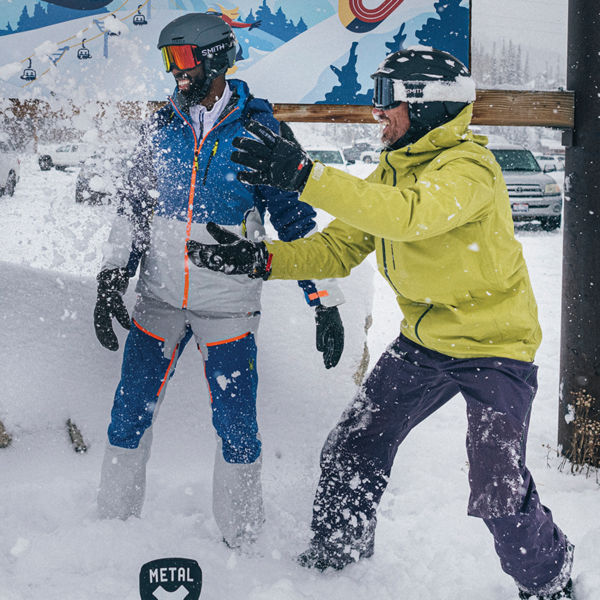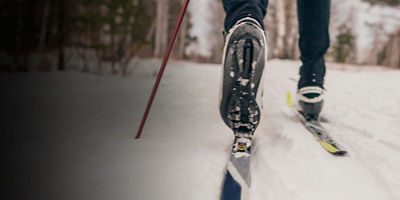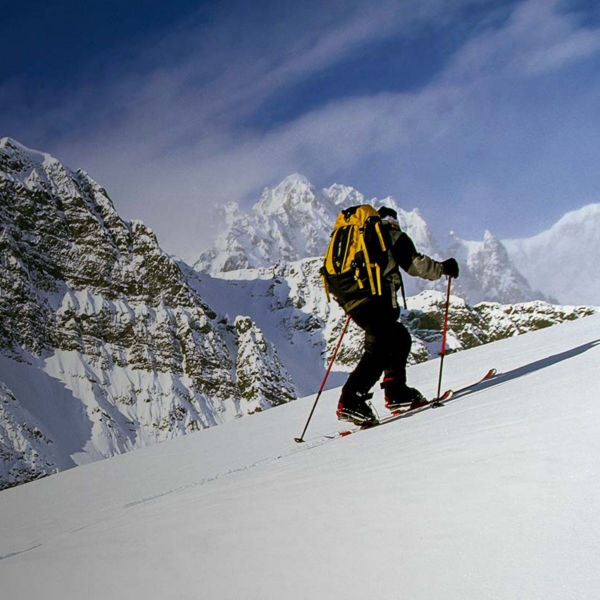
While Alpine skis have changed tremendously in the last decade, so too have Alpine bindings. Wider skis mean wider brakes and bindings, offering more power, control and safety features. Important features to look for when selecting a binding—which include a toe and heel piece—include its type, DIN range, brake width and more outlined below. Above all, don’t skimp; bindings are perhaps your most important piece of safety equipment, keeping your skis attached when skiing and, just as important, releasing when needed to prevent injury. Note: Make sure they’re only mounted and adjusted by certified technicians.
Alpine vs. touring bindings
Built with security and safety at the forefront of design, downhill (aka Alpine) bindings have a fixed toe and heel, locking you in place at all times. Alpine touring (often called AT) bindings are designed to allow you to hike or skin up the mountain and then ski down. When in touring mode, your heel releases off of the ski, allowing you to ascend, while the toe remains fixed. When it comes time to descend, the heel locks down again for downhill performance. Note: Ski touring tech bindings, also called pin bindings, are not generally subjected to certification and are only compatible with touring boots with toe and heel holes to accommodate the bindings’ metal pins. If you’re only skiing at resorts and don’t plan to tour the backcountry, stick with conventional Alpine bindings.
Race bindings
These are different from traditional recreational Alpine bindings in that they maintain a narrower platform to fit narrower racing skis. They’re also heavier and more durable, and often fitted with risers for enhanced carving ability, plus they come with higher DIN ranges for harder release settings.
Binding types
Your ski bindings should match your skill level. Because of their light weight, kids can use bindings with lower release settings (often called Junior) than adult bindings. Beginner and intermediate skiers (Type 1 or 2) don’t require high-level release settings; unless you’re heavy, lower-end to mid-range models usually suffice. Advanced and aggressive skiers (Type 3) require bindings with higher release settings.
Brakes
All ski bindings are required to have safety brakes, which come in a variety of widths. In general, ensure the brake width is at least as wide as the waist of your ski. If in doubt, bring your skis in when buying to make sure the bindings are compatible.
Anti-friction devices (AFDs)
These are metal and/or Teflon pads that mount on each binding under the forefoot, just before the toe piece. Matching up with the boot sole, they allow the boot to slide easily out of the bindings upon release. Note: Many touring boots designed for “tech” touring bindings do not have friction pads compatible with conventional Alpine bindings.








